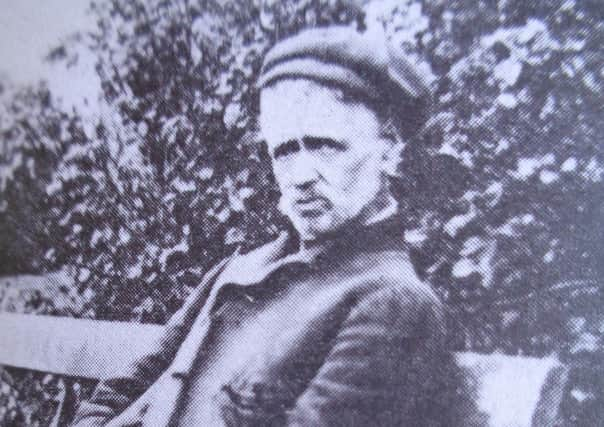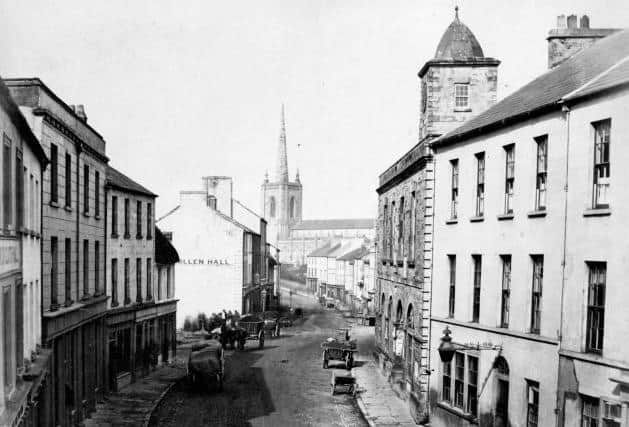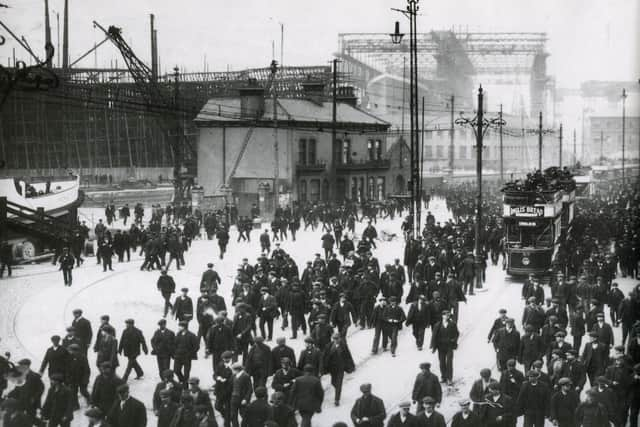A Yuletide look back at just some of the pages from a year of roaming


Fittingly, it was one of our greatest roamers - James Stoddard Moore, aka Dusty the Tramp - who ushered in the year that’s ending.
Born in Cushendall in 1844, James left home in his teens to travel the world, gold prospecting in California, soldiering in India and Afghanistan, sailing the Arctic and Antarctic in whalers and the planet’s other oceans in merchant ships…and finally, roaming in Northern Ireland!
Advertisement
Hide AdAdvertisement
Hide AdFor the last 22 years of his life, until he died aged 95 in 1939, Dusty wandered the lanes, tracks and roads of North Antrim, writing poems.


He’d featured on this page previously, but when we opened our News Letters on New Year’s Day 2020 we were greeted by the first verse of his ‘Song of Myself’.
“My life it is a merry one
I revel in delight.
I laugh at men who struggle in


The world’s ceaseless fight.
I never mind how much they strive
For fortune, fickle scamp.
The world’s affairs take no effect
On Dusty Rhodes, the tramp.”
If he’d been here, with a mobile phone, on March 24, Dusty might well have amended some of his lines after the UK Government texted the nation - “Coronavirus Alert. New rules in force now: you must stay at home. Protect the NHS. Save lives.”
But before the pandemic struck, other important matters were pending. A reader recounted the Tyrone-man who emigrated to Canada and got a job cutting firewood for a railway company. He worked in a forest, urgently chopping timber for the steam-trains before the winter snowfall. He chopped tirelessly, watched closely by an old Canadian Indian chief on a horse. Knowing he could probably ‘read the signs of nature’ the Tyrone-man asked the old chief if a harsh winter was likely.
“Yes,” he replied gravely “Very long. Very hard.”
Advertisement
Hide AdAdvertisement
Hide AdThe railway worker chopped faster and faster, still watched by the old Indian, and the pile of logs grew higher.
“Are you absolutely sure,” the Tyrone-man repeated a few days later, “that it’s going to be a long hard winter?”
“Yes,” the Indian affirmed with sombre certainty.
“But how do you know?” the railwayman asked.
“Me know very well,” the old chief replied, “very well indeed - because white man cut much wood!”
We encountered a great variety of poets and poetry here during the year, not just Dusty the Tramp’s. There were poems by travel writer Richard Hayward, by Winnie-the-Pooh’s author A.A. Milne, by T.S Elliott, W B Yeats and by WWI poets Francis Ledwidge and G Studdert Kennedy.
Advertisement
Hide AdAdvertisement
Hide AdAnd everyone knew of another famous bard whose writings adorned this page several times during the year.
“I wandered lonely as a cloud
That floats on high o’er vales and hills,
When all at once I saw a crowd,
A host, of golden daffodils”
William Wordsworth’s most famous poem was published in 1807, inspired by a walk in the Lake District with his sister Dorothy.
“There is one conspicuous church with a tower,” he wrote 22 years later in 1829, after rising at the crack of dawn to view Enniskillen from a lakeside hill.
His early-morning observation, penned whilst touring Ireland, was recalled in author Sam Morrow’s book about the building that caught Wordsworth’s eye.
Advertisement
Hide AdAdvertisement
Hide AdEntitled ‘St Macartin’s Cathedral - At the Heart of the Community’, the book features rowan berries at the top of every page.
The name Macartin means ‘son of the Rowan Tree’.
The book’s wide embrace of the church’s history includes details of the earliest gravestone, dating from 1625, and the bell in the cathedral tower that was founded from cannon captured at the Boyne that were presented to Enniskilleners by King William.
There’ll be more reminisces from the last 12 months’ pages here next week - Roamer and the News Letter will be otherwise engaged on Friday!
But today’s lookback ends with another of the year’s most memorable moments, not texted onto our mobile phones but hailed in a video message at 11pm on January 31, when Prime Minister Boris Johnson described the departure of the UK from the EU as the “dawn of a new era”.
Advertisement
Hide AdAdvertisement
Hide AdThere had been much discussion about what we’d do when the clock struck eleven, but Roamer has already done it!
On a recent travel assignment to Eberbach Monastery, Germany’s biggest vineyard in the State of Hessen, my visit ended serenely with a congregational ‘Ode to Joy’ sung in the former Cistercian monastery’s old basilica.
I wept as Beethoven’s ‘Anthem of Europe’ gently echoed around the stunningly-beautiful 12th-century church.
But along with the reality of finality I remembered the proud part played by Northern Ireland in the making of Europe.
Advertisement
Hide AdAdvertisement
Hide AdAs the Industrial Revolution flourished the world became a vast, global supermarket.
The supermarket’s shelves were variously endowed - Brazil was the ‘meat and rubber’ shelf, India was the ‘tea and textile’ shelf, but Northern Ireland was the ‘continental shelf’ with Belfast’s River Lagan acting as a vital industrial artery to every corner of the globe, particularly Europe.
That’s our unique strength of character, which will get us through whatever we face, today, tomorrow, next week, or next year.
Stay safe and well and have a very Happy Christmas and a Happy New Year.